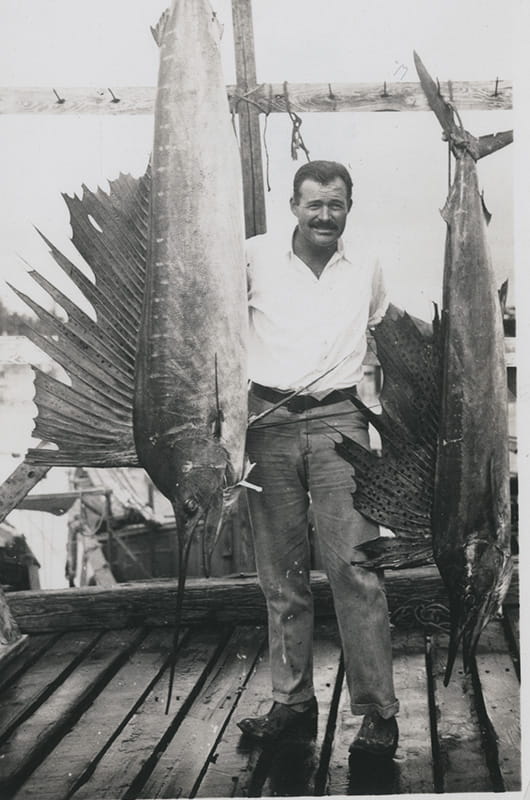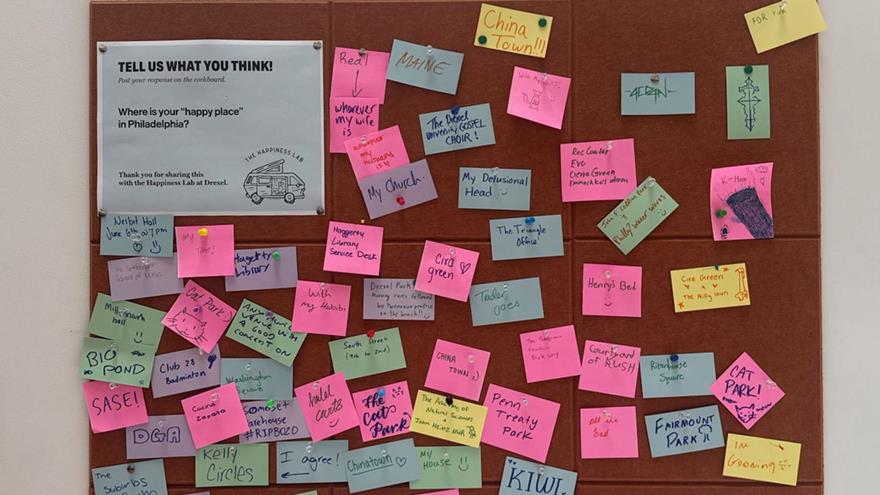'A Warm Friendship': The Legacy of Hemingway and the Academy

In 1934, Ernest Hemingway invited two members of the Academy of Natural Sciences of Drexel University to fish with him in Cuba to study Atlantic billfish. Eighty years later, history will repeat itself when an Academy member travels to Havana with the author's grandsons to commemorate Hemingway's literary and scientific legacy.
From Sept. 7–13, Robert McCracken Peck, senior fellow at the Academy, and 13 other American marine biologists, naturalists, historic preservationists and Hemingway descendants will visit the Cuban village and sights that inspired Hemingway while writing “The Old Man and the Sea,” which was cited for Hemingway's Nobel Prize for Literature 60 years ago. But the group will also pay homage to another essential aspect of Hemingway's life in Cuba: his love of fishing and his observations of the billfish, a group of fish similar to marlin or swordfish that was little studied during his time.
"Most people do not realize that Hemingway had this interest in science, and in fish in particular,” said Peck. “We think of him as a sports fisherman, but he actually contributed a lot to the study of marine fishes by working with the Academy of Natural Sciences.”
Hemingway began his scientific collaboration with the Academy in 1934, when he met the two men he would later take that extended fishing trip with: Charles Cadwalader, the president of the Academy, and Henry Weed Fowler, an ichthyologist and the Academy's first full-time curator of fish.
Fowler, who would later classify 25,000 of the world's fish in a four-volume work called "A Catalog of World Fishes," accepted Hemingway's help in learning more about billfish, which were then abundant in the waters off Cuba. According to Peck, Hemingway was convinced that the fish he caught and observed that were being lumped together as “marlin” were actually several different species of fish.
"We now know that there are a number of different marlin species and subspecies—many more than were appreciated at the time,” Peck said. “Now we can do with DNA what Hemingway could only do by visual observation. And many of the suspicions Hemingway had based on his firsthand experiences have been proven true scientifically."
Originally, Hemingway had invited the two Academy men to gain similar firsthand experiences during a trip he estimated would take a few days. But after experiencing trouble finding the fish, Fowler and Cadwalader didn’t leave for another six weeks.
The benefits of the trip lasted even longer than that. Fowler helped Hemingway understand more about the sea life he encountered in his fishing expeditions and would later write about in “The Old Man and the Sea” and articles about the trip that were published in Esquire. Hemingway wrote long letters, either hand-written or typed with long annotations, containing information and photographs of him with the fish he caught for Fowler to include in his work on the Atlantic game fish. To honor Hemingway’s contributions, Fowler named a spinycheek scorpionfish Neomerinthe hemingway in honor of the author, and the specimen is still contained in the Academy’s Ichthyology Collection.
"You can tell from their correspondence that the three men developed a warm friendship during their time together aboard the Pilar. They had great respect for one another," Peck said. "The letters they exchanged after the trip became much more personal and informal, even though they were filled with a great deal of technical scientific information."
Peck hopes to continue to prolong the exchange of mutually beneficial information about the game fish by opening exchanges with Cuban experts on many of the same kinds of fish that Hemingway and the Academy scientists investigated. Currently, most research efforts on the fish are conducted with the International Commission for the Conservation of Atlantic Tuna (ICCAT), of which Cuba is not a member. Additionally, information is currently not easily shared between Cuba and the United States, even though the fish regularly migrate between the two countries.
The American delegation will meet with the Cuban researchers at the Center for Marine Research at the University of Havana and the National Aquarium of Cuba to discuss the possibility of working together on fish-tagging and DNA studies.
"We're hoping that a new generation of scientists from both countries will be inspired to revisit, revise and expand the work that we started with Hemingway in Cuba 80 years ago," Peck said.
During the trip, Peck and the other members will also experience part of Hemingway's life in Cuba by visiting his favorite hotel, restaurants, marinas and harbors. To generate interest in preserving Hemingway's legacy in Cuba, the delegation will also tour Hemingway’s home-turned-museum, Finca Vigía, and the restored Pilar fishing boat that Cadwalader, Fowler and Hemingway fished from. His grandsons, John and Patrick Hemingway, will speak at symbolic ceremony on the estate to commemorate the 60th anniversary of Hemingway's Nobel Prize, which Hemingway said "belongs to Cuba, because my works were created and conceived in Cuba, in my village of Cojimar, of which I am a citizen."
For Peck, being able to visit Hemingway's Cuba to commemorate the author's literary and scientific legacy is a once-in-a-lifetime opportunity that he has been working toward for a very long time. In 2012, he authored a chapter on Hemingway's relationship with the Academy in “A Glorious Enterprise: The Academy of Natural Sciences of Philadelphia and the Making of American Science.” Before then, he had searched for restaurants Hemingway mentioned in his memoir “A Moveable Feast” during a trip to Paris in 1999. But his love of Hemingway dates back even further.
"I started reading Hemingway's novels when I was in high school, and ‘The Old Man and the Sea’ was one of my favorites. Never did I imagine that all these years later I would have the opportunity to actually see where he wrote it, and do so in the company of his grandsons," he said.
In This Article
Drexel News is produced by
University Marketing and Communications.

